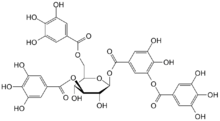 Tea drinkers are familiar with the concept of astringency, that mouth-drying, puckery feeling after drinking a cuppa. That sensation is the result of chemicals in the leaf called tannins. Those tannins help prevent many creatures, including birds and insects, from consuming the plants.
Tannins are very powerful. They are able to denature proteins, protect plants from ultraviolet light, and prevent bacteria, microbes and fungi from having a negative effect on the plants. But the strength of tannins could also be a weakness. Their powerful impact must be minimized inside the plant so they do not destroy it. Scientists have come to understand that tannins must be isolated in the cells by structures called vacuoles. But how do they get there?
Scientists in France and Hungary have finally discovered more about the origin of tannins and their story begins with a previously unknown organelle called the tannosome. In the cells there are chloroplasts, the part of a plant cell where light is captured and photosynthesis occurs. The chloroplasts are lined by membranes called thylakoids. Jean-Marc Brillouet and his research team discovered that tannosomes emerge from this membrane and then group together within a new membrane called shuttles. From there they move on to a protective vacuole, making tannins along the way. These multiple layers of membranes, the tannosome membrane along with membranes in the shuttle and vacuole, offer the protection the cell needs from the tannins.
It is also interesting to note that because tannosomes are formed from chloroplasts, they are green, not brown as some might expect.
Source: Scientific American and Annals of Botany
Tea drinkers are familiar with the concept of astringency, that mouth-drying, puckery feeling after drinking a cuppa. That sensation is the result of chemicals in the leaf called tannins. Those tannins help prevent many creatures, including birds and insects, from consuming the plants.
Tannins are very powerful. They are able to denature proteins, protect plants from ultraviolet light, and prevent bacteria, microbes and fungi from having a negative effect on the plants. But the strength of tannins could also be a weakness. Their powerful impact must be minimized inside the plant so they do not destroy it. Scientists have come to understand that tannins must be isolated in the cells by structures called vacuoles. But how do they get there?
Scientists in France and Hungary have finally discovered more about the origin of tannins and their story begins with a previously unknown organelle called the tannosome. In the cells there are chloroplasts, the part of a plant cell where light is captured and photosynthesis occurs. The chloroplasts are lined by membranes called thylakoids. Jean-Marc Brillouet and his research team discovered that tannosomes emerge from this membrane and then group together within a new membrane called shuttles. From there they move on to a protective vacuole, making tannins along the way. These multiple layers of membranes, the tannosome membrane along with membranes in the shuttle and vacuole, offer the protection the cell needs from the tannins.
It is also interesting to note that because tannosomes are formed from chloroplasts, they are green, not brown as some might expect.
Source: Scientific American and Annals of Botany
